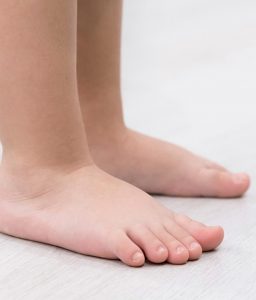 “I know you can be born with flat feet, but can your arches really just fall as an adult?”
“I know you can be born with flat feet, but can your arches really just fall as an adult?”
This was the exact question we were asked last week by a patient, concerned with the possibility of his feet spontaneously flattening. Our answer? Yes. Your feet can flatten as an adult. But it’s not ‘spontaneous’. Let us explain.
Flat feet: an overview
Having a brief look over recent studies on the prevalence of flat feet in adults, it may affect anywhere between 13% and 26% of adults. For most of these people, they’ve had flat feet for as long as they can remember. Their foot posture has not changed, though some may have developed bunions or other problems over the years.
For others, however, their feet have flattened over time. While no-one (that we know of) has gone to bed with arches and woken up archless, others have taken between months and years for their feet to flatten. Almost always, there is a specific cause for this occurrence, so we thought we’d highlight some common ones.
1. Pregnancy
During pregnancy, you incur higher levels of a hormone called Relaxin in your body. It helps soften and relax your ligaments, increasing their flexibility. This is important to help your body grow and expand with your baby. As a side effect, the ligaments of your feet also relax, so when combined with increased weight during pregnancy, it can result in your feet flattening and becoming wider.
Often, the feet return to their normal state after pregnancy – though not always.
2. Posterior tibial tendon dysfunction (PTTD)
Your posterior tibial tendon runs down the inside of your leg, beneath your ankle, and moves to attach beneath the arch. It’s a key player for helping maintain the shape of your arch, as well as helping you walk and stand on your tiptoes.
When your posterior tibial tendon is injured, it is unable to fulfil its role sufficiently and so your arch may lower. If it is left untreated, the problem can continue to worsen as the tendon sustains further damage, causing many other pains in the process.
To learn more about PTTD and how it is managed, click here.
3. Charcot foot
A charcot foot typically occurs in people with diabetes or nerve damage. Here, the bones and tissues are weakened to the point that they can easily fracture and dislocate. Without quick intervention, the bones in the foot start to collapse, following warmth, redness and swelling.
As people with nerve damage have diminished sensation, often they cannot feel pain or recognise what is happening with their feet. As they continue to walk and put pressure on their weakened foot bones, permanent structural changes occur. Often, the result is a ‘rocker bottom’ foot, that will require a lot of support from shoes and orthotics.
This is a serious and high-risk condition that can lead to infections and ulcerations if an open wound develops. It requires immediate treatment and care.
4. Rheumatoid arthritis
Rheumatoid arthritis is an autoimmune disease that attacks your body’s joints, leading to their weakening. With the ligaments and bones weakened, the feet may start to flatten as the bones shift out of their normal alignment.
While the changes are not as aggressive as charcot foot (above), proper care and support for the feet is crucial to maintain mobility and comfort.
5. Injury
Injury to the ligaments and tissues that support and stabilise the arch can also result in your feet becoming flatter. Often, injury to just one ligament alone isn’t enough, but widespread damage, often occurring in accidents, may destabilise the arch and lead to its flattening.
The good news is that if you’ve had a serious foot injury, you’ll be assessed by a doctor (and likely surgeon) who can inform you of your risks and how best to manage them. This is why it’s always important to get any foot injuries assessed.
Noticed your arch flattening?
If you’re worried that your feet may be flattening and want to understand what is happening and why, we’d love to help. Our team of registered podiatrists have experience in a wide range of sports medicine disciplines, as well as disease management. A comprehensive biomechanical assessment will help us identify any muscle or ligament weakness, and bone damage. Combined with medical imaging and other testing, we’ll work with you to get the best outcomes for your feet and arches.
Book your appointment by calling 1800 FOOTDR or clicking here.


